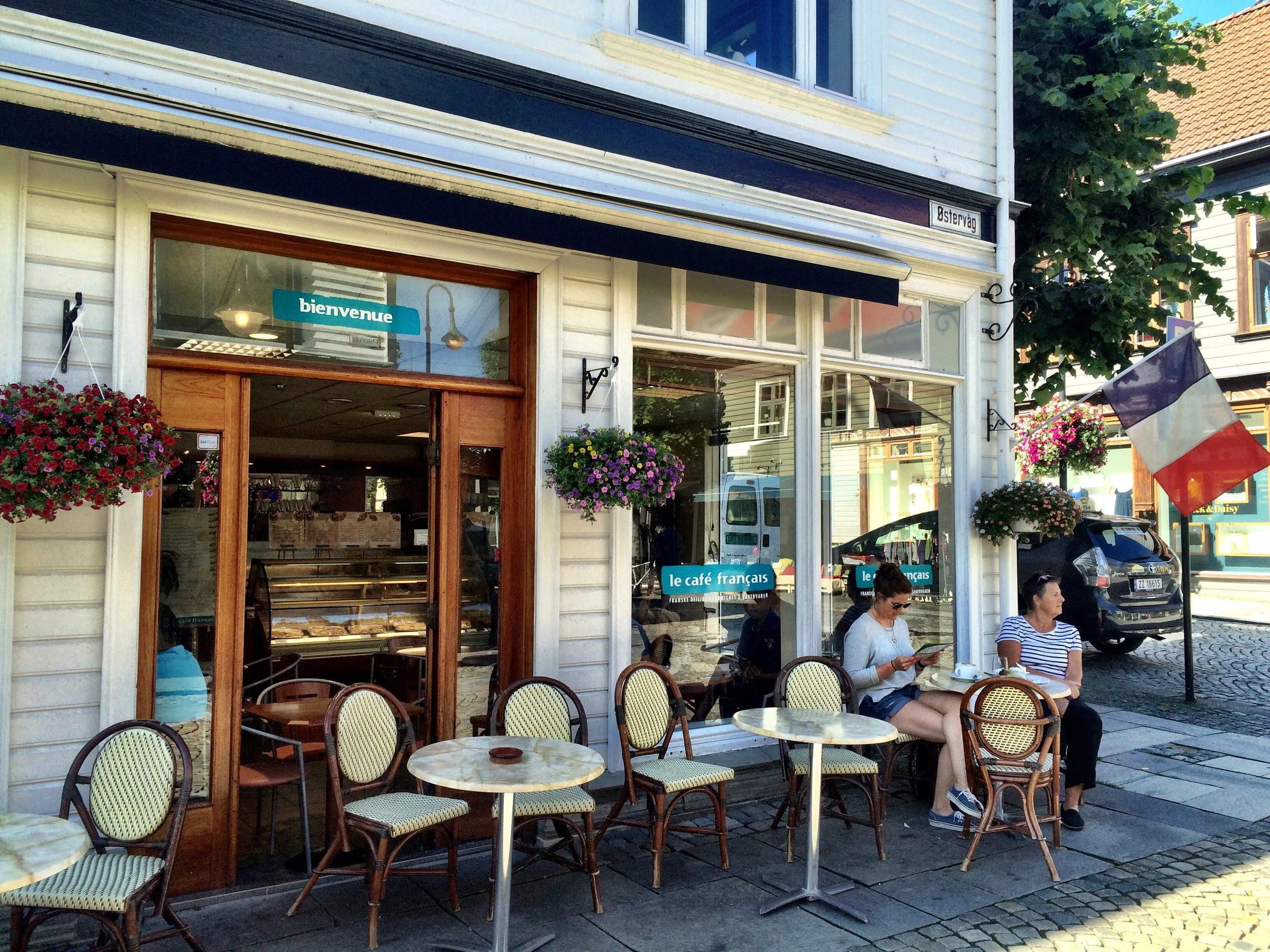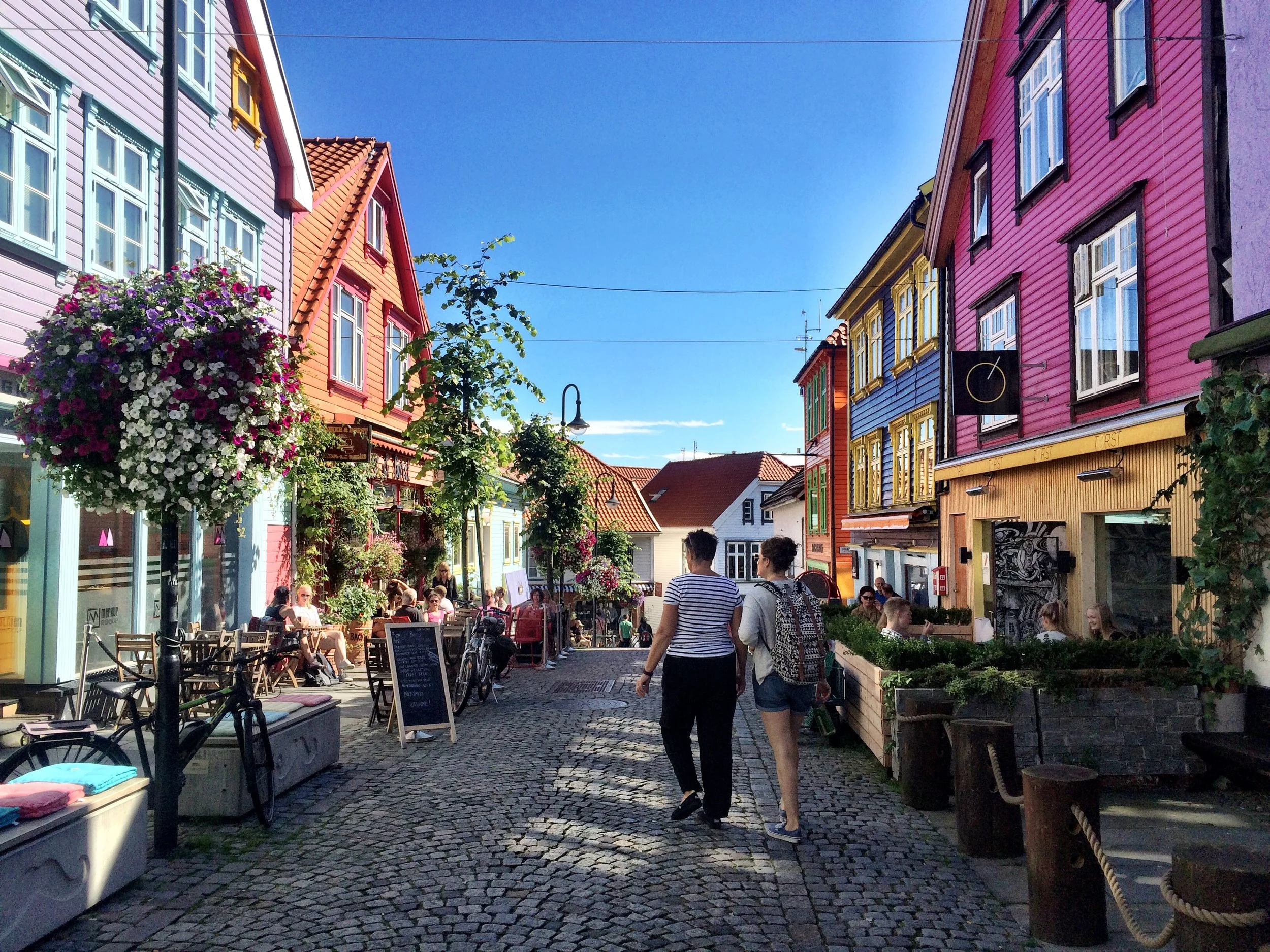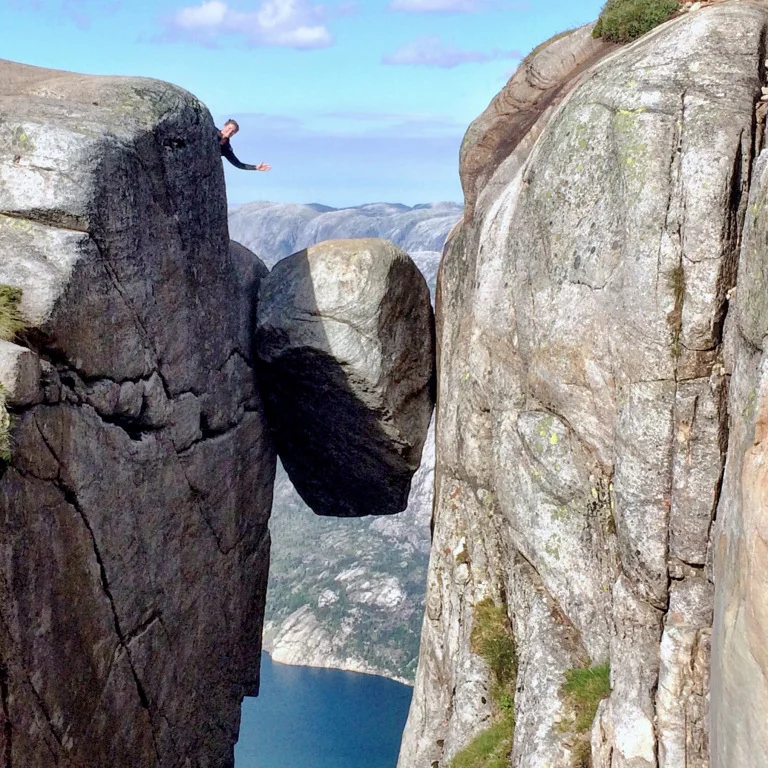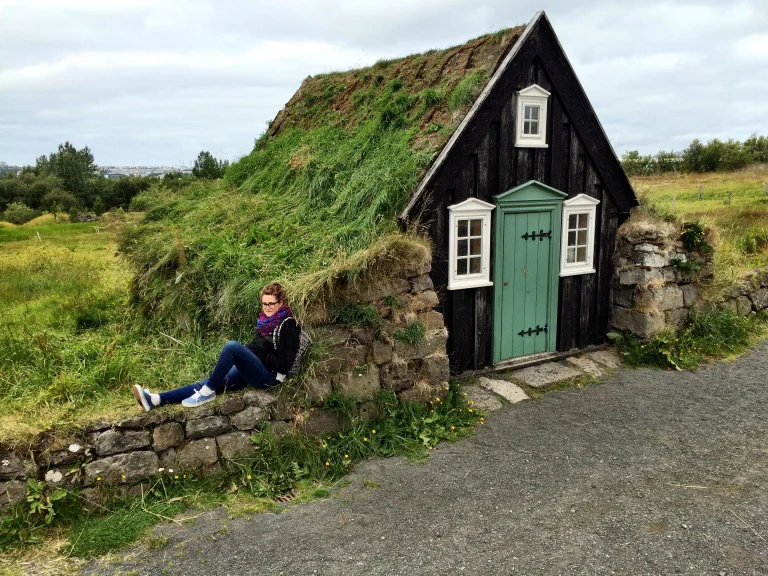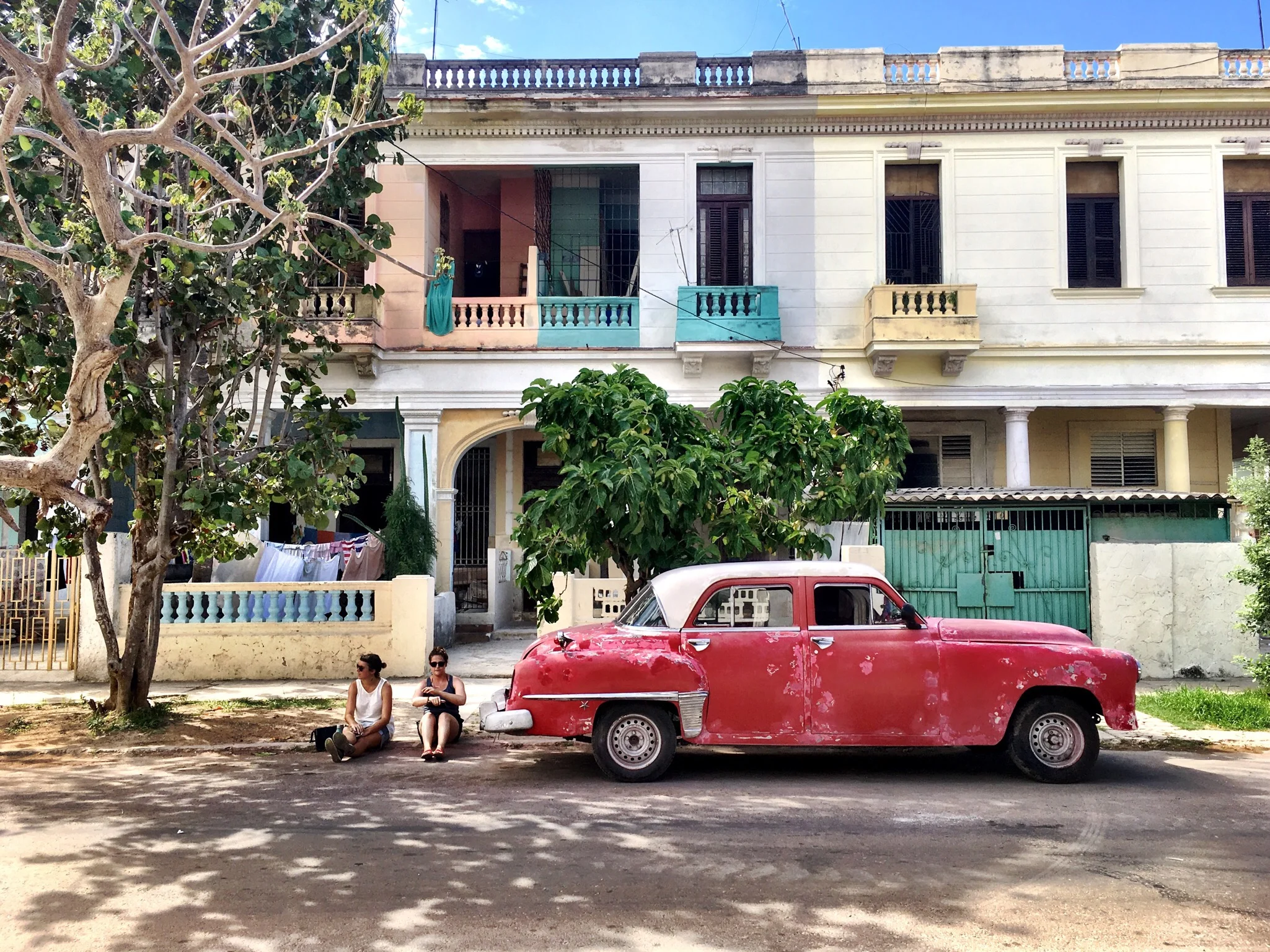Norway | August 2015
IN FLIGHT
Travel time: 8 hours, 40 minutes (KEF to CPH to SVG)
Miles covered: 3,674 (roundtrip)
Movies consumed: alas, no screens! (cracked a book, instead)
Hours slept: never enough
POST FLIGHT
Travel time: 4 days
Miles covered: 11.5 miles (on foot)
McDonald’s vanilla cones consumed: 4 (almost 5, had they not run out of soft serve)
Currency: NOK (Norwegian Krone), 1 USD = 8.6 NOK, as of 2016
Chapter Eight:
Our Scandinavian summer concluded with four days in Stavanger, Norway. Our final Icelandic airbnb host (coincidentally an Icelandair employee) was kind enough to drop us at Reykjavik’s BSÍ Bus terminal, in order to catch the flybus to the airport. Tickets can be purchased at the counter inside the terminal. The ride is only 45 minutes and 2,200 ISK per person. We had a layover in Copenhagen – a beautiful, bustling airport. I am always in awe of the caliber of restaurants and shops in airports abroad. We arrived in Stavanger at 9:55 p.m. It was our intention to take the more economic local city bus to our accommodations, but we were tired and had trouble locating the pickup spot for our particular bus. Instead, we took the more expensive Flybuss. One-way tickets cost 120 NOK each. The driver accepts cash or credit card as you board. The bus ride takes about 30 minutes. We were dropped off at the Clarion Hotel, just five blocks from our airbnb (an adorable loft apartment) on Wessels Gate. (Please let me know if you are interested in more detailed information regarding the various accommodations.)
For reasons that will become clear, we made many trips to and from the Sola Airport, discovering a more economic, less efficient route. To affordably travel to our accommodations in the Wessels Gate area (just east of Eiganes gravlund), we could take bus number 9 (Stavanger – Sola – Forus to Sandnes) to the city center. The bus picks up on the curb outside baggage claim. Look for a sign with the route 9 timetable posted. The bus costs 33 NOK per person each way. The driver accepts exact cash fare only. There is also a smartphone application for purchasing tickets. Should the elusive 9 not be your bus of choice, the Kolombus website has a journey planner to help you find your preferred route. We learned that not all 9 buses go to the airport. I would check with the driver as you board in order to ensure that the bus is going to the destination of your choosing. Most are friendly and helpful. We rode this bus from Sola to Kannik (in Stavanger, along Madlaveien) and vice versa. This is a local bus with frequent stops, so the ride takes about an hour.
Chapter Nine:
We had two big day hikes planned in Norway, and decided to use our first day in Stavanger to relax and explore the city. Like Iceland, Norway is very expensive. Maybe even more so. Unlike Iceland, the weather was perfect – sunny and warm. Time to unpack the jorts. We walked the meandering, cobblestone streets of the old town; observed the bustling port where cruise ships commonly dock; and to the lighthouse. Valbergtårnet was completed in 1853 and used only briefly as a lighthouse. Watchmen manned the tower to warn of fires. The building is now a private art gallery, located on the Valberggata on the east side of Stavanger’s harbor.
We checked out the ferry terminal, from where we would depart on next day’s excursion. And wandered up and down Øvre Holmegate, colloquially the “colorful street” for obvious pronunciation reasons. Stavanger is charming, a maze of narrow, winding streets populated with shops and restaurants.
We also managed to find the best deal in town: the vanilla cone from McDonald’s at just 9 NOK. We stocked up at a grocery store near our loft and dined alfresco on the amazing deck of our host. Any self-respecting foodie (with a soft spot for Parts Unknown and Netflix’s Chef’s Table) is aware of the fine dining experiences Scandinavia boasts. Noma and Fäviken are considered two of the best restaurants in the world. I love to indulge in fifteen courses as much as the next person, but this was not that trip. If you are into that sort of thing, I’m told RE-NAA and its more casual bistro and express restaurants are wonderful.
Chapter Ten:
We pre-booked the Preikestolen (Pulpit Rock) hike with Tide Reiser. Ferries leave frequently from Fiskepirterminalen. You can choose any departure. The ferry ride from Stavanger to Tau is beautiful.
From Tau, there is a brief bus ride to Pulpit Rock cabin. The tickets purchased are for ferry and bus only. If you have a rental car and choose to drive to Pulpit Rock, you will not need to purchase tickets. There is parking available for a fee. The trail to Pulpit Rock is well marked. Just follow the people and red dots painted on rocks. It is approximately 6km (4 miles) round trip. The initial ascent is quite steep. The rest of the hike is not too difficult. You are essentially hiking up a river bed. There is very little running water, but lots of rocks to traverse during the 350 meter climb.
The breathtaking viewing platform, approximately twenty-five square meters, was formed by melting glaciers thousands of years ago. There are other trails leading to various overlooks above Pulpit Rock and Lysefjord below. These trails are less traveled and more exposed to gusty winds.
You will find picnic and swimming areas along the trail. We ate sandwiches and snacks at an idyllic spot on the way down. One of my biggest regrets was forgetting my bikini, allowing modesty to prevail, and, therefore, finding myself unable to swim in the watering hole we passed on the way back down.
The parking/drop off area at the bottom has a gift shop, convenience store, and public restrooms. Through Tide Reiser, your trip is open-ended. Return buses depart every hour and do fill up. Depending on your place in line, you may have to wait for the next one. I would advise looking at the return schedule (posted in the parking lot, near the restrooms) before heading out, just so you have a sense of the timetable. The return ferry from Tau runs twice an hour and transports vehicles, too.
For those less actively inclined, there is the option of a two and a half hour fjord cruisewith full sightseeing program and guiding in several languages. Cruises depart from both Fiskepirterminalen and Skagenkaien in the main harbor of Stavanger, near the fish market. The cruise takes you through Lysefjord, where you can catch an alternate view of Pulpit Rock from the water below.
That afternoon, post workout and vanilla cone reward, we returned to Stavanger airport (shout out to the number 9 bus and the local teen who helped us board the correct one) to pick up our compact rental car, which just so happened to be the fanciest Mercedes I had ever seen. The car rental process is simple. You just need to provide credit card and driver’s license. Norway is covered with toll roads that register your license plate as your pass. You will eventually be charged the tolls by way of the rental car agency. We got so lost on the way back to the city that I don’t know where to begin giving directions to someone else. On the bright side, compared to California, the drivers are slow and courteous. Be advised, roundabouts are the new traffic signal.
Chapter Eleven:
We hop in the car around 6:00 a.m. to drive to Kjerag for our next hike. From Stavanger, the beautiful drive – on narrow, windy roads – takes about two and a half hours on routes E39, 45, Fv975 to Fv986 to Fv500. There is a more direct route, taking a ferry through Lysefjord, but we were unclear on how regularly the ferry ran and chose to go around. Kjerag is poised at one end of Lysefjord, with Preikestolen at the other. There are also bus tours traveling to Kjerag, i.e. Tide Reiser. The bus departures only give hikers six hours to complete the journey. We were nervous about that being enough time to complete the hike. We are physically fit but prone to taking our time when it comes to photography and lighting. As it turns out, those allotted six hours are plenty of time. The hike took us about five, including nearly an hour spent at Kjeragbolten. We rented a car in order arrive early and enjoy a relaxed pace, but I think it saves money, as well. Also, it gives you the flexibility to change plans based on weather forecasts. Both hikes can be quite susceptible to high winds and other weather conditions. And, as we know, it can and does rain in the middle of summer. In fact, we changed our plans last minute to take advantage of better conditions on day three.
The round trip 12km (7.5 miles) hike is essentially ascent, descent, ascent, descent, ascent, then level til the end. You are climbing three incredibly steep granite mountains with the aid of chain ropes. The hike is moderately difficult and, frankly, a little bit scary. I found the return trip worse because you are forced to look down. Again, the trail is well marked with red spray-painted on rocks. I encourage you to go as early as possible. We began the hike around 9:00 a.m., and reached the boulder in a couple hours. We were at the top with maybe twenty other people. As the day goes on, it gets really crowded, with long waits (up to an hour) to get on the boulder. And then it takes a long time to descend, sharing one set of chains with crowds coming in.
My sister and fellow travel enthusiast went on the boulder. She did it. I was so terrified I couldn’t even look at her. By viewing it through the camera lens I was somehow insulated from what was happening – fully aware, but entirely focused on my very important task at hand. Only once she was back on solid ground did my body stop shaking. After that, I knew I wouldn’t do it. Maybe if I was the one to go first. But not now. Now I couldn’t risk ruining a perfect day by falling 1,000 meters to my death. I had to settle for this:
Here is my unsolicited advice. For those of you who are sure footed and unfazed by heights, go ahead, you’ll be fine. I was shocked with how cavalier most people were: three young men on it at once; this other woman doing one-legged yoga poses with her selfie stick. We even caught a glimpse of bare buns. In doing my own research beforehand, I saw some photos showing a chain hanging from the jumping off point. For us, there was a screw drilled in the side of the rock, but no chain attached. And I don’t know how much support a chain would offer. A helping hand is preferable, less slack. Honestly, all the research I did in advance made me more terrified. I can confidently say that the photos and videos made it seem worse than it was in real life. All it takes is one small step for man, one giant leap…never mind, that’s something something else.
The surface area of the boulder is quite large. I think I mentioned the three men that managed to squeeze on. In the past twenty years, ten people have died. And they were all base jumpers, not Kjeragbolten photo opportunists. But if you are like me, overcautious and a little clumsy, maybe don’t risk it. I have regrets in my life. And, sure I would like this picture of me for Instagram.
But, to boulder or not to boulder is not one of those decisions that keeps me up at night. Be safe. Either way, the hike is well worth it. And we managed to find a glacier lagoon, after all.
There is a restaurant, restroom facilities, and a large parking lot at the base. You can pay for parking at the self-serve machine. And the lot does fill up. People were still arriving as we left around 2:00 p.m., late starts being a viable option during the long summer days. Endorphins still kicked in, we drove back to Stavanger, returned the rental car to the airport (free wifi available so we were able to let mom know we were safe), and took the bus back to town. We’d come to know that route well. It was difficult to find parking in the residential parts of Stavanger without an overnight permit, so we returned the car that night rather than as we departed the next day. We dined on pretty decent curry, pad thai, and fried rice at Naree Thai.
Chapter Twelve:
The end is nigh. In my travels, you no doubt noticed the proverbial troll in the room. Regrettably, we did not make it to the notable Trolltunga (Troll’s Tongue). At just over four hours, it was too far a drive from our home base, and we simply ran out of time. Perhaps, I’m just looking for an excuse to return.
We departed Stavanger that afternoon, and made it to Copenhagen without incident. However, the flight to Iceland was delayed indefinitely. To appease us, Icelandair provided a meal voucher (claimed at airport services) that just barely covered dinner and a drink. Then, our preferred food stand ran out of hotdogs! Not even the self-serve draft beer could lift my spirits.
An interesting thing happened while loitering and grumbling at the gate. We were approached by a representative of TRS Travelright. In Europe, delayed, cancelled or overbooked flights may entitle passengers to monetary compensation. So these agents flit around the airport – gate to delayed gate – tracking down passengers from such flights. For a percentage of any monies recovered, they employ legal professionals that will handle the airline’s red tape and tedious paperwork. We reluctantly filled out their form, to negotiate by proxy, and hoped for the best. In the end, we did not receive any compensation for our delayed flight, but at the same time, no harm was done or identify theft perpetrated. That I know of.
That night, when we finally arrived back in Iceland, we stayed at Ace Guesthouse, outside the city, closer to the airport. The room was perfect, with the most comfortable beds, fresh fruit, and overflowing cookie jars. I wish we could have stayed longer. The guesthouse staff graciously picked us up and returned us to the airport the following morning for an extra fee. For budgetary reasons, it made the most sense to procure two roundtrip flights (Los Angeles/Reykjavik via Delta Airlines and Reykjavik/Stavanger via Icelandair) rather than flying home directly from Norway.
Chapter Thirteen:
For the second time in seven hours, we found ourselves at Keflavik airport in Iceland. Let me tell you, I love this airport. Joe and the Juice is a trendy coffee and juice bar. The Blue Lagoon store gives you one last opportunity to buy tubes of lotions and silica mud masks for the road. An opportunity I, for one, was not going to squander. And the bookstore presents nearly all of Halldór Laxness’ oeuvre. In print. In English. I’m not a souvenir person. I don’t need (but sometimes like) physical mementos to remind me of experiences and people I’ve encountered. This time, cracking the magnificent pages ofIndependent People was more than enough.
Epilogue:
Before the last ice age ended about 10,000 years ago, Norway was covered by a thick sheet of ice. As that ice melted, its movement across the land formed islands, lakes, rivers, and mountains. It also etched-out deep valleys that then filled with seawater forming its iconic fjords. Norway’s unique geography includes 240,000 islands and a coastline that stretches over 63,000 miles. The western coastline alone is a jagged expanse of over 50,000 islands and dozens of long, deeply indented fjords.
Stavanger is Norway’s oil capital. But most residents drove compact hybrids. For those interested, the Petroleum Museum explains how oil and gas are created, discovered and produced, and what they are used for. The museum also provides information about technological advances and the way petroleum influences Norwegian society.
I would be remiss if I did not mention Norway’s other claim to fame. From 2009 to 2013, it topped The Legatum Institute’s list of happiest countries in the world, thus stoking the fires of jealousy and envy in languishing Americans, unable to crack the top ten. However, more recently, Norway’s standing is questionable as both crude oil demand and prices drop.
In another effort to go green, since the Viking and Middle Ages, Norwegians have covered the roofs of their homes with bark and sod. Apparently, the turf roofs provide long-lasting stability and insulation. Plus, they look awesome.
This now revived tradition, originally intended for those who could not afford anything else, begs the question: what about people who live in grass houses, can they throw stones?



